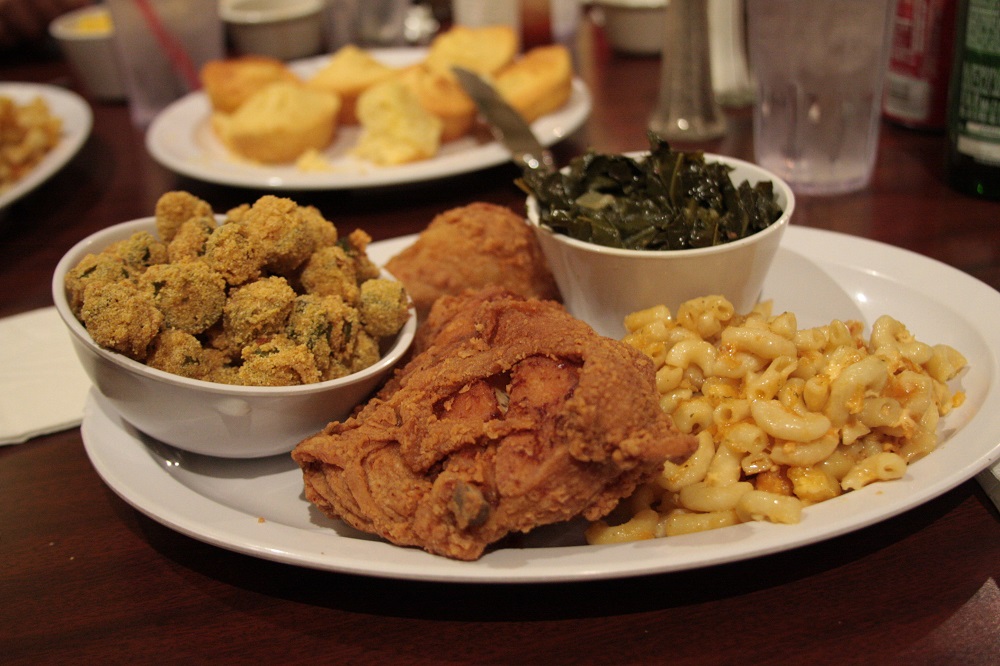In an age of globalization and with communication making it so much easier to share cultures across different boundaries, it’s no surprise that a lot of the things in our culture also comes from what we learn from other cultures. Some of these examples include our fashion, our beliefs, and, most importantly, our food.
Chef and cookbook author Aarón Sánchez once stressed the importance of food and how it brings people together. Whether it’s just a small group of family and friends coming together to share a meal or for people of different cultures and backgrounds getting a taste of another country’s dishes, food is the center of all cultures and family gatherings.
And I find that, among all the cuisines, soul food is the best example of cultures coming together. In a country like America that is a mixture of so many cultures, many people often take for granted that the food they love to eat actually comes from African American, Native American, and Southern American history.
Out of all the cuisines, I think it’s one of the most interesting to look back and see how much it has integrated itself into American culture. So much so that many people may be surprised about what counts as authentic soul food.
What Is Soul Food?
It’s difficult to describe soul food when it’s been used to describe both spiritual food (food for thought and those little nuggets of wisdom) and actual soul food. In its cultural use, soul food is the result of various cultures coming together to form what would become part of the Southeast United States’ culture and African American culture.
History
 Back in the 1960s, the term “soul” was used to describe African American culture. Around this time, racial discrimination was still an issue and Black and White Americans were still segregated by law and societal norms. Many sought to change this inequality by starting the Black Power movement.
Back in the 1960s, the term “soul” was used to describe African American culture. Around this time, racial discrimination was still an issue and Black and White Americans were still segregated by law and societal norms. Many sought to change this inequality by starting the Black Power movement.
The term “soul food” can be traced back to 1965, when writer LeRoi Jones published an article entitled “Soul Food.” This was one of the first movements that established Black American identity through the use of food. In restaurants owned by Black Americans, the menu was significantly different from that of a White American restaurants.
Back in the time when slavery was practiced, plantation owners and white masters often gave their slaves food rations such as pork, cornbread, catfish, ribs, neck bones, green vegetables, and sweet potatoes. Because slaves needed high amounts of nutrients to operate in the fields, they developed a practice of frying their food with breading, adding vegetables with meat, and more.
Because poor white Americans ate similar food and white slave owners made some slaves cook for them, soul food eventually made its way towards Southern culture. Because it was illegal in several states to teach slaves to read and write, recipes had to be passed along orally until the emancipation in 1888, when the first soul food cookbook was published.
Examples of Soul Food Dishes
You’ll rarely find soul food in upscale restaurants (unless they’re “deconstructed,” “elevated,” or whatever fancy term a restaurant will but ultimately end up creating an unfamiliar dish that looks and tastes nothing like the soul food we know and love). That’s because the cooking style is very basic and tastes much better when it feels homemade.
Soul food typically has the ingredients mentioned above, fried in oil, lard, or pork fat. Apart from the greens, there’s nothing vegan or organic about authentic soul food. And these dishes are often best served with sweet and cold drinks.
Some meats used in soul food cuisine include:
- Chicken fried steak
- Fatback (the back of a pig containing hard fat often used to make bacon and lard. Seasoned, breaded, and fried)
- Fried chicken, fish, and pork chops
- Cooked ham hocks (hog knuckles and ligaments), hog jowls (cheeks), hog maw (stomach), pig’s feet, and chitterlings (offals such as intestines)
- Ox tail
- Pork with vegetables, gravy, and sauces
- Pork ribs
- Poultry giblets
Popular soul food dishes include:
- Cornbread
- Grits
- Hoecake
- Mac n’ cheese
- Hushpuppies
- Cobbler Pie
- Sweet Potato Pie
- Banana Pudding
- Red velvet cake
Soul Food vs. Southern Food
 Because soul food developed in the rural south and Black Americans influenced Southern cuisine with their soul food, it’s easy to be confused between the two, and some dishes tend to overlap between the two.
Because soul food developed in the rural south and Black Americans influenced Southern cuisine with their soul food, it’s easy to be confused between the two, and some dishes tend to overlap between the two.
Bob Jeffries, author of the 1969 “Soul Food Cookbook,” explains it better: according to him, soul food is a subset of Southern food, but not all Southern food counts as soul food. While poor white Southerners and black slaves roughly had the same ingredients available, soul food had more heat, more seasoning, and knew how to turn offal ingredients into memorable dishes.
Soul food is a representation of the Black American’s ability to make do with what they have. Where white Americans would see offal ingredients as disgusting and throw it away, Black Americans were forced to maximize whatever they had and turn it into something good. They were able to turn cheaper ingredients into something that was not only filling and got them through a day of work, but also delicious and managed to bring people together through food.
Essential Soul Food Ingredients
Cooking authentic soul food requires specific ingredients. While some people opt to replace these ingredients for healthier substitutes or their own local alternative in places where certain items are unavailable, it can significantly change the flavor, giving it an inauthentic flavor.
- Lard – Made from pig fat, lard helps in both cooking and baking. It’s what makes biscuits fluffier and pie crusts flakier compared to using butter.
- Canola oil – Canola oil has low saturated fat and a high smoking point, meaning it is the ideal oil choice for deep frying meat.
- Cornmeal – A main component in cornbread, grits, and hush puppies. Also used to coat and bread meat and vegetables for added carbohydrates.
- Flour – Also used as breading. When used as a baking tool, most people go for self-rising flour or add salt and baking powder to all-purpose flour.
- Condensed Milk – A lot of soul food, especially desserts, has a hint of creamy sweetness to it, which comes from whole milk mixed with a lot of sugar. Evaporated milk – unsweetened condensed milk – is what makes mac n’ cheese even creamier.
Health Concerns
Does soul food taste good to you? In terms of healthiness, however, eating some black-eyed peas, collard greens, and okra may not be healthy when you’ve deep-fried it or eat it with a plate of fried fat. Like all things unhealthy, soul food should be consumed in moderate amounts. Otherwise, there may be long-term effects to your health.
Because of the lard, oils, and carbohydrates, soul food has high levels of starch, fat, sodium, and cholesterol. The high amount of salt in seasoning can spike blood pressure and make a person more prone to diabetes, clogged arteries, stroke, and heart attacks.
However, there are still healthier substitutes that won’t affect the taste of soul food. Replacing lard with vegetable or canola oil for frying and cooking can reduce the amount of fat absorbed by the meat. Pig farmers are also changing the way they raise their pigs so that they’re leaner. Some vegetarian and vegan companies have even provided tofu and soy-based products that tastes just like pork.
It’s up to you to decide whether or not these healthy alternatives make it less authentic soul food. However, that’s not to say that soul food doesn’t provide nutrients. Due to its high caloric count, it’s a good dish for people who are always active and on the go. Collard greens and other vegetables common in soul food are the source of plenty of vitamins, minerals, and fiber. Sweet potatoes are a good source of beta carotene, which can help reduce the risk of diabetes and improve insulin resistance.
If food is something that brings us together, soul food is a great example. Its history shows a time of resilience, creativity, and camaraderie in the Black American community, and its delicious food existing today shows how good it really tastes. Just try not to think about the fat content.


